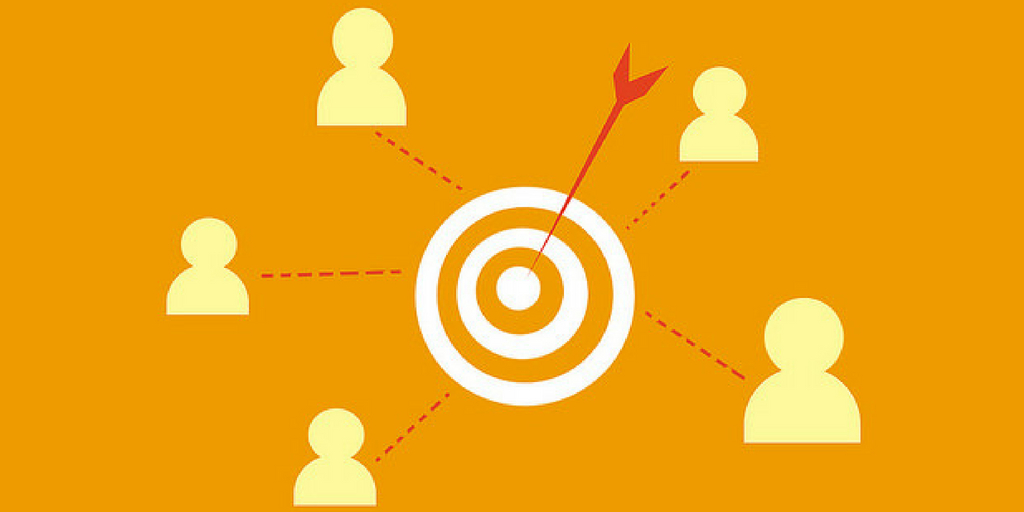
by Fronetics | Sep 4, 2018 | Blog, Content Marketing, Logistics, Marketing, Social Media, Supply Chain
Live video is a powerful tool that can help your supply chain business grow its social media footprint, build brand awareness, and generate leads.
Live video is the super-hot new thing when it comes to generating leads and selling. But the supply chain has, so far, been hesitant to embrace it whole-heartedly as a marketing tool.
I can understand how you might find this new content format too “young” or consumer-facing for B2B sales. But at Fronetics, we think if done right, live video can be really effective.
What is live video?
Maybe you’ve gotten a notification on Facebook to let you know that your nephew is live streaming his piano recital, or a college friend is “live” at a wedding. But, let’s face it: Not many supply chain companies are using live video in their social media marketing. So you may not have thought about it in a professional context.
This “it’ trend in social media has really taken off in the past two years, and marketers are starting to jump on the bandwagon. With today’s emphasis on corporate transparency and putting a real, human face behind business social media accounts, live video is a perfect fit. In fact according to the 2017 Social Media Marketing Industry Report, 61% of marketers plan on using live video services, and 69% are interested in learning more about it.
[bctt tweet=”61% of marketers plan on using live video services, and 69% are interested in learning more about it, according to the 2017 Social Media Marketing Industry Report.” username=”Fronetics”]
These are the 4 live video platforms you should be aware of.
1. Facebook Live
Facebook’s live streaming platform lets you broadcast for up to 90 minutes per session, and notifies your audience that you’re streaming live. It also allows viewers to comment and react during your broadcast, and you can read and respond to their remarks immediately.
2. Periscope
Twitter’s answer to live video, Periscope has more than 10 million users, and lets user live stream from their mobile devices and push those streams directly onto Twitter.
3. Instagram Live
Instagram lets users connect to their followers in real time, through its Stories feature. Like Facebook, Instagram lets viewers add real-time comments that are visible to you and the rest of your audience.
4. YouTube Live
Online streaming video juggernaut YouTube makes it incredibly easy to aim, shoot, and post live video.
How to use live video
Michael Stelzner of Social Media Examiner recently interviewed income strategist and Facebook Live-guru Nicole Walters on the Social Media Marketing Podcast. Walters gave listeners clever tips for using live video to build a following and generate leads. We recommend giving the podcast a listen, but read on for our key takeaways.
Walters advocates for spontaneity in live video but suggests having a format or framework to give you structure and ensure that you’re sticking to your goal of generating leads. Her format is in three parts:
Part One: The Opener
In your introduction, which should be about 30-45 seconds, Walters suggests starting with your name, website, and a brief sentence to give your audience an overview of who your business is and what your video is about. Next, be sure to welcome your audience, perhaps with a special shout-out to new viewers, as well as regulars. Walters also encourages viewers to share her video and to interact with her as she broadcasts.
Part Two: Instructional Content
This is the meat of your video and typically lasts up to 30 minutes. Start by introducing the topic you’re presenting on and why it’s important. Walters also suggests encouraging viewers to take notes, with the rationale that notetaking leads to engaged viewers. If you’re launching a product or service (a great use of live video), you’ll want to cover the need you’re answering with your launch and how your product or service will solve it.
Walters points out that while she prepares extensively for her broadcasts, she avoids reading directly from a piece of paper, as it could easily get impersonal and boring. Instead, she gives herself a cheat-sheet of bullet points to keep her on track.
Part Three: Call-to-Action
This is the final stage of your live video, in which you send your viewers to a page where they can either pay or submit information to receive additional, high-value content (like e-books, webinars, etc.). Walters might say, “If you love this and want to dive in and get the details you need, then head over to NicoleWalters.tv. If you click the center of the page, you’ll find the product… I’ll be right here if you have questions. But come back and tell me you grabbed it.”
Live video offers all kinds of potential value for supply chain marketing. From customer engagement and feedback to transparency and brand awareness, this is a tool for the future of supply chain marketing.
Related posts:


by Fronetics | Jul 23, 2018 | Blog, Content Marketing, Logistics, Marketing, Social Media, Strategy, Supply Chain
Part four in our series on effective lead generation walks you through how to create a form that converts leads, getting you the information you need without driving prospects away.
Welcome to the last installment of our series on effective lead generation and nurturing. Now that you know how to:
- Create and package a valuable offer
- Add calls-to-action that work
- Design a landing page that converts
So, what’s next? The final step in the lead generation process, and one that’s too often overlooked and undervalued, is designing a form that gets you the information you need.
It’s all in your form
When prospects get to your landing page, they’ve indicated that they’re interested in your offer. Ideally, what they find on your landing page has reaffirmed their interest. Now it’s time for them to provide you with what you’re looking for in return for the value you’re offering them: their contact information.
The information you glean from your prospects will feed into your Customer Relationship Management (CRM) or other lead management database. This means that you should essentially be retrofitting your form based on your email segmentation criteria. In other words, you want to get just the right information from your prospects that will allow you to tailor your lead nurturing to best suit their needs and interests.
[bctt tweet=”An effective form strikes the delicate balance between acquiring all the necessary information and keeping the willingness and attention of your visitors.” username=”Fronetics”]
Your head might be filling with visions of long and comprehensive questionnaires — not so fast. If you make your form too long or involved, prospects will abandon it out of impatience and frustration, or feel that you are exploiting them for more time or information than they’re willing to provide. An effective form strikes the delicate balance between acquiring all the necessary information and keeping the willingness and attention of your visitors.
3 characteristics of forms that convert leads
For this last and crucial step in your lead generation strategy, it’s all about capturing leads. So, what makes for an effective form?
1. Find the length that works for you.
Conventional wisdom would have you believe that the shorter your form the more leads you’ll get, whereas the longer the form, the better quality (though fewer) leads you’ll get. But that’s a bit of a simplistic and defeatist way of looking at it.
We think you can have your cake and eat it, too. The key is to design your form with your email segmentation criteria in mind.
Ask as few questions beyond the basics as possible to get you precisely the information you need. Your goal is richness of information, as opposed to lengthy, detailed questions. For more, check out HubSpot’s guide to creating a form.
2. Don’t frighten them away.
It may seem counterintuitive, but you should avoid using the word “submit” on your form. Nobody likes the idea of “submitting” their information.
Instead, use a phrase that demonstrates that your prospect is about to get something that they want by supplying their information. For example, “Get it free,” or, “Download now,” emphasizes what the prospect will receive, rather than what they will be giving.
3. Protect their privacy.
In the current climate, we’re all thinking more and more about how our data gets collected and shared. Make sure your prospects know that you’ll be a good steward of the information they provide you.
Add a privacy message or link to your privacy policy, indicating that their email or contact information won’t be shared or sold.
Creating forms that convert leads is the final step — though one of the most crucial — in effectively turning website visitors into prospects. If you can manage to create a valuable offer, entice visitors with a call-to-action, convince them to convert on a landing page, then present a form that encourages them to complete it (rather than drives them away), then you’ve done your job as a marketer.
Related posts:


by Fronetics | Jul 19, 2018 | Blog, Content Marketing, Logistics, Marketing, Social Media, Strategy, Supply Chain
In part three of our series on effective lead generation and nurturing, we walk you through the components of effective landing pages that convert visitors to leads.
If you’ve been keeping up with our four-part series on effective lead generation, you should be up to speed on creating a valuable offer and a call-to-action that works. The next step in a finely tuned lead generation process is a landing page that converts.
Why does my offer need a landing page?
[bctt tweet=”Landing pages are crucial, and brands miss out on opportunities when they fail to optimize them. According to HubSpot, marketers see an average 10% conversion rate on landing pages — that represents a huge amount of missed opportunities.” username=”Fronetics”]
Landing pages are crucial, and brands miss out on big opportunities when they fail to optimize them. In fact, according to HubSpot, marketers have seen an average 10% conversion rate on landing pages — that represents a huge amount of missed opportunities. Brands that have it right, those that focus on designing for conversions, reap the benefits in big ways.
Your primary objective for a landing page is to get visitors to submit their contact information in exchange for the offer. At this point in the process, your potential customer has already engaged with your call-to-action, meaning he or she is interested in your offer. When they get to your landing page, everything they find there should affirm their choice to and assure them that the content they are about to download is going to be relevant, interesting, and valuable.
Designing landing pages that convert
So what are the hallmarks of a great landing page? Starting with the basics, your landing page should briefly, simply, and clearly describe the benefits of your offer. It’s important that there be as few distractions as possible. For example, make sure the page doesn’t have a top navigation menu. Bonus points for including ways to share your offer on social media.
Additionally, you should make sure that your landing page doesn’t include links to other things on your website, as they can distract the lead and perhaps send them somewhere else on your website where they can find the information you’re presenting in your offer.
As you design your landing page, keep this checklist in mind:
- Is it clean, organized, and clearly presented?
- Is there any ambiguity about where or how leads should enter their information?
- Does it describe the benefits of my offer?
- Is it free of extraneous or distracting content or links?
- Is it mobile-friendly?
- Does it contain easy ways to share on social media?
If you follow these tips for landing pages that convert visitors to leads, we’re confident you’ll start to see an uptick in your website conversion rate almost immediately.
Related posts:


by Fronetics | Jul 18, 2018 | Blog, Content Marketing, Logistics, Marketing, Supply Chain
Once you’ve decided how to create and package a valuable offer, the next step in an effective lead generation is creating calls-to-action that convert leads.
If you read part one of our four-part series on effective lead generation, you’re familiar with the first step in creating a campaign that will generate a high volume of quality leads: creating a valuable offer. So what’s next?
In part two of this series, we’re exploring how to draw visitors from reading content on your website to taking a desired action.
When we talk about this second step, we use the term “call-to-action” (CTA). It refers to the tool that asks the reader of your content to take the next step — rather than just assuming they will do it. A call-to-action can be in-line text with a hyperlink, a button, or an image-based web-banner.
Why do you need a CTA?
CTAs are the vital step where you ask your potential client or buyer to take an action that moves them one stop closer to your objective of connecting them with your company. But plenty of marketers forget this crucial element of an effective campaign.
If you’re offering high-value content (like an ebook, webinar, infographic, or product demonstration), but you aren’t including a specific CTA, you’re not giving your audience direction for obtaining the offer — and you’re probably missing out on plenty of qualified leads.
[bctt tweet=”If your CTAs aren’t effective at capturing the attention of your prospective leads and persuading them to click, then no matter how impressive your offer or how well-written your content, it’s pretty much useless.” username=”Fronetics”]
A CTA is yet another opportunity to optimize your campaign. Remember that you’re competing with every other brand in a fight for the attention of your audience, and you need to make the most of every opportunity to draw them toward your business.
Keep in mind that if your CTAs aren’t effective at capturing the attention of your prospective leads and persuading them to click, then no matter how impressive your offer or how well-written your content, it’s pretty much useless. Your CTA can be used on product pages, in display ads, email, social media, direct mail, or pretty much anywhere you’re marketing your offer.
Elements of calls-to-action that convert leads
Not all CTAs are created equal. As you think about incorporating a call-to-action into your offer, keep in mind these 4 tips for maximizing its productivity:
1. Choose your location wisely.
Back when people read newspapers, editors would place important news “above the fold:” high enough on the page so the reader wouldn’t have to unfold the paper to see it.
A well-placed call-to-action follows the same principle, and should be high enough on the page so your target lead won’t have to scroll down to see it. You should also place a second CTA further down within the offer.
2. Be clear.
You don’t want to leave your reader puzzling about what will happen when he or she follows your CTA. State the offer clearly, and be specific. For instance, rather than “download now,” say “download your free ebook.”
3. Don’t hide your light.
Your call-to-action should stand out on the page. Choose contrasting colors for your CTA, so it draws the eye and doesn’t blend into the rest of your text.
We’ve found, in many cases, our clients have the most success with calls-to-action that are image-based (particularly in emails). A really well-designed, attractive, image-based CTA can effectively draw click-throughs in a way other kinds of calls-to-action can’t. Give it a try!
4. Link to a landing page.
Send potential leads to a targeted landing page that is relevant to what they are looking for. Your CTA should send them to a page that will convert them into a lead.
For more information, check back in with our next post, when we explore how to create a landing page that converts leads.
How do you design calls-to-action that convert leads?
Related posts:


by Fronetics | Jul 17, 2018 | Blog, Content Marketing, Logistics, Marketing, Strategy, Supply Chain
The first step in an effective lead generation campaign is creating valuable offers to convince website visitors to entrust you with their contact information.
Welcome to part one of my series on effective lead generation.
In this four-part series, I’ll guide you through the four most crucial components of the creating an effective lead-generation and lead-nurturing campaign. And I’ll help you tailor your strategic marketing objectives to generate a high volume of quality leads.
Today, we’re looking at how to create valuable offers, the first step in converting a website visitor into a lead.
Offering value
To generate a lead, you need to convince visitors on your website to give you their contact information — and this takes work. You can’t simply expect them to generously hand over their personal information. (Don’t we all get enough emails?!) This means you need to tempt them with something they really want, which you give them in exchange for their contact info.
You may be asking, what will my audience find valuable? And this is where your content comes into play.
[bctt tweet=”Well-written, high-quality content is always more effective at generating leads than an overt sales pitch.” username=”Fronetics”]
One of the fundamental principles of content marketing is that your expertise is just as valuable as your products and services. Well-written, high-quality content is always more effective at generating leads than an overt sales pitch.
Creating valuable offers
When designing your content, keep these three questions in mind:
1. What does my audience need?
It might seem like a basic consideration. But before you jump with both feet into creating an offer, take a step back and really consider the needs of your audience.
This is a good time to check out other industry blogs, social media, and online forums like Quora. What kinds of questions are your prospective buyers asking? What problems are they facing, and how can you help them?
2. How do I best serve the information I’m presenting?
Once you have a clear, well-researched idea of what your audience needs, think about what format best serves the content you’ll be offering them.
Depending on how your information should be structured, valuable content offers could be industry reports, guides, infographics, free consultations, product demonstrations, discounts, or webinars. You’ll often find that you can repurpose your existing content into an exclusive new, valuable offer.
3. How do I let my audience know that my offer is valuable?
So you’ve figured out what your audience needs, and created and structured a content offer to meet that need. Now it’s time to let your audience in on the secret.
The higher the perceived value of an offer, the more irresistible it becomes. And a big part of what we perceive to be valuable is about exclusivity and high demand.
To create this feeling of exclusivity and demand, use elements like:
- Limited-time offers
- Limited quantities
- X number of people have seized this offer
- Content that matches current trending topics
- A title that hooks interest
When you create an offer that your target audience perceives as truly valuable, your lead-generation efforts will begin to grow exponentially.
What tips do you have for creating valuable offers? Want to learn more about the crucial components of the creating an effective lead-generation and lead-nurturing campaign? Here’s the rest of the posts in our series:
Related posts:










